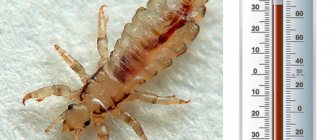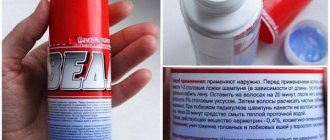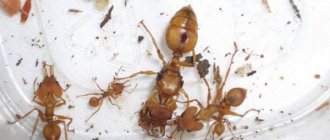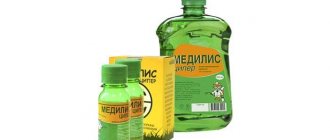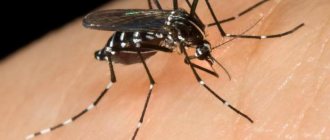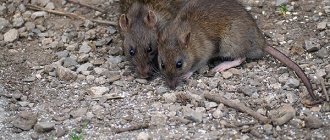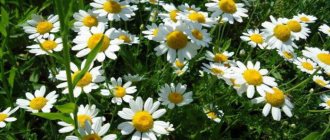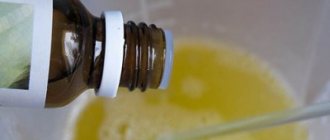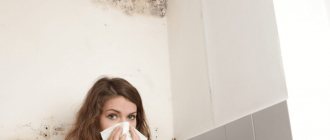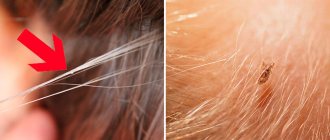The influence of temperature on the vital activity of lice
At what temperature do lice die? The critical point for these parasites is a thermometer mark above +40 0C and below -5 0C, however, this interval can be significantly reduced or increased if certain environmental conditions change. To a large extent, it also depends on the stage of development of the parasite.
The effect of heat on lice
Lice do not tolerate high temperatures very well. First of all, heat affects their ability to reproduce. At +40 0C, the process of egg maturation in the female’s body stops. A further increase in temperature leads to a delay in the development of the embryo in already deposited nits, but its death occurs only at +60 0C.
The relatively high resistance of nits to high temperatures is explained by the presence of a dense protective shell, which protects the embryo in its most vulnerable period. Adult insects do not have such protection. Their soft chitinous integument is not able to protect them from heat and lice die at a temperature slightly above 55 0C for 2-3 minutes.
Humidity can greatly affect the survival rate of lice. A high content of water vapor in the air leads to a decrease in evaporation from the surface of the insect's body. This, in turn, reduces heat transfer and causes overheating.
The following temperature patterns in the life activity of lice at a relative air humidity of about 70% have been identified:
- 40 – 45 0C – females stop laying eggs;
- 45 – 50 0C – lice and their larvae remain viable from several hours to 30 minutes;
- 50 – 55 0C – adult individuals die within a few minutes, the development of nits stops;
- 55 – 60 0C – insects die almost instantly, eggs remain viable;
- 60 0C and above – nits are destroyed.
Effect of cold
Lice are no less afraid of cold than heat. Zero temperature causes them to experience a state close to shock. They stop reproducing, feeding and practically do not move. The development of embryos in the eggs stops, and the larvae go into a kind of hibernation.
Do lice die in the cold? It depends on whether they are on the human body or away from it. Head and pubic lice, which live directly on the surface of the skin, are better protected from the effects of cold than their counterparts living in clothing. You can walk in the cold all day without a hat and get inflammation of the brain, and the insects will feel great. Lice will react in the same way to swimming in an ice hole. It is more likely that a person will catch a cold and develop pneumonia than these parasites will die.
A stable temperature is always maintained on the surface of the body. In particular, on hairy areas, as well as those covered with clothing, it can range from +29 0C to +34 0C. Even on unprotected skin, the temperature never drops below zero. Therefore, it is practically impossible to remove body parasites with frost, but this technique will work perfectly against linen lice.
Critical sub-zero temperatures for lice at a humidity of 70%:
- 0 – 5 0C – insects do not reproduce and stop feeding, the development of embryos in eggs is suspended;
- 5 – 15 0C – lice die within a few minutes, nits remain viable;
- 15 – 20 0C – almost instantaneous death of both adult insects and their larvae at different stages of development;
- 20 0C frost kills nits.
What temperature is comfortable
Head lice have adapted to living on the human body among hair. The temperature regime of a healthy person suits them quite well. When the ambient temperature falls within the range of 20 to 38 degrees Celsius, the parasites eliminate the feeling of hunger, take care of the offspring and continue to exist for up to 5 weeks.
They begin to experience discomfort at lower thermometer readings. High temperatures also have a negative effect on lice. But for body lice, extreme conditions are rarely created due to heat or frost.
Can lice appear on colored hair?
When there is a suspicion of lice infection, almost every representative of the fair half of humanity asks the question of whether lice get in colored hair?
Despite the fact that some paints contain components that have a negative effect on the body of parasites, lice can feel quite comfortable if the coloring procedure was carried out several days ago. Thus, the answer to the question of whether lice live on colored hair can only be positive.
Why don't lice live on painted ones?
Exceptions that exclude the possibility of lice include the regular use of aggressive dyes containing ammonia, perhydrol, and a number of others. On a head that is dyed at least once a week, lice may not appear.
However, dyeing so often is still not recommended, as curls and strands become brittle and dull. A strong, strong odor can repel lice. For example, seams do not sit on dyed hair directly during the dyeing procedure, as this may well cause their death.
Climate influence
Insects that parasitize humans live and reproduce in the home. The climatic zone where a person's habitation is located is of secondary importance.
The microclimate of the room is very important for bedbugs. In a well-heated house located in Siberia, insects will be as comfortable as in a dacha located on the shores of the southern sea.
Many years of experience have made it possible to accurately determine at what temperature bedbugs die.
- They tolerate very hot microclimates worst of all. If the temperature is more than 50 °C, the bug survives for less than 5 minutes. At 45 °C it can last for half an hour.
- Insect eggs are covered with a thermal protective layer, thanks to which they remain viable at 50 °C for 24 hours.
- Bedbugs tolerate low temperatures more easily. At a frost of 10 °C, they temporarily reduce activity, freeze, and enter a state of suspended animation.
- When the temperature drops another 5-7 °C, bedbugs can remain viable for up to 4 days.
- If the frost reaches 20 ° C, the insects will die within a few hours.
- Eggs tolerate low temperatures better. At -20 °C they can survive for 2 days, after which they die.
Linen bug
Frost has a detrimental effect not only on bedbugs, but also on the communication systems of an apartment or house.
In residential areas, you can place small items in the freezer. It is advisable to keep them there for a week.
In a private home, you can take sofas and armchairs out into the cold. Freezing the entire apartment is problematic. Walls, wallpaper, and water pipes may be damaged.
It is easy to get rid of bedbugs in winter in summer houses, garages, and outbuildings. This is an important event.
At what temperature do bedbugs die?
Bedbugs are highly dependent on environmental climatic conditions. The most comfortable conditions for them are “home” conditions. There are two factors that will make pests feel at ease:
- climate stability;
- constant access to food.
House bugs feed on human blood because they cannot penetrate the fur or skin of an animal. The most comfortable temperature for a bug to live is 24-270C, which corresponds to room temperature.
The life cycle of these insects is directly dependent on climate:
- under favorable conditions, parasites can live up to a year, and the time to “hatch” from the egg is 35 days;
- if the environmental temperature is slightly higher than normal (27-32C), the eggs mature faster, but the life span is reduced to 10 months;
- if it is slightly below normal (20-24C), the parasites live longer (up to 15 months), however, their embryos also mature longer;
- if the environmental temperature drops below 15C, the eggs stop developing and the adults fall into a state of suspended animation. If the frost lasts 72 hours, the bedbugs will die.
Temperature control methods
To kill parasites, methods involving heating and greatly reducing the temperature are used. Depending on the circumstances, you can use the most suitable option.
Hairdryer
A hair dryer can be used to loosen parasites. First you need to wash your hair with hot water, then select the maximum heating of the air stream that a person can tolerate. It is recommended to use a diffuser-shaped nozzle.
To kill lice at home, use a hair dryer.
The hairdryer is brought to the skin and heat treatment begins for 8-10 minutes. To prevent the device from overheating, take a short break. After some time, the procedure must be repeated 2 more times.
After heating with a hairdryer, lice do not die, but become inactive. They do not adhere well to the hair and can be easily combed out with a brush or a special comb. Parasite eggs hatch in 7-10 days. To achieve optimal results, treatment should be carried out at least once a week.
Iron
To destroy parasites, it is convenient to use an iron or curling iron. Thanks to the high temperature, you can get rid of adult insects and their larvae.
The procedure should be carried out as follows:
- Wash your hair thoroughly with shampoo.
- Distribute hair into small strands.
- Treat your curls with heat-protective agents to reduce the negative effect of strong heat.
- Gradually process each strand from the roots to the ends of the curls, slowly running the surface of the iron along the entire length.
- After the procedure, comb your hair thoroughly with a special comb and wash your hair again.
The anti-lice iron also affects young individuals and parasite eggs.
The duration of contact of the surface of the iron with the hair should not exceed 2 seconds. Otherwise, exposure to high temperatures may harm the structure of the curls.
Steamer
You can process things using a household steam generator. The method is effective for killing body lice. Hot steam can destroy insects at all stages of development. The procedure is recommended to be carried out for 20-30 minutes. After processing items of clothing and bedding, you need to clean them of dead parasites with a brush, then wash them.
Bath
The bath is a traditional way to combat head lice. It should be remembered that parasite eggs can withstand heating up to +60°C. Adult insects and nits can be destroyed in a room heated to +80°C. In this case, you should not only steam, but also actively water your hair with hot water.
After the procedure, it is necessary to remove dead parasites with a comb. In 3 sessions you can completely get rid of lice.
To treat lice, you can go to the bathhouse.
Cold
Frost can also cause the death of insects. To combat body lice, you need to hang out and leave underwear and clothing outside for 48 hours. Under such conditions, adults, nymphs and eggs die.
If it's warm outside, you can use another method. Infected items of clothing should be packed in a plastic bag and placed in the freezer for 3-4 hours, then take out the items, remove dead insects with a brush, wash them and iron them.
Iron
You can kill body lice with an iron
Items must be ironed carefully, paying special attention to the lining and inner seams of the garment. It is necessary to use heating of at least +60°C
At temperatures above this value, adult parasites and eggs die instantly.
Ironing is an effective remedy for lice.
Application of high temperatures
High temperatures to kill lice
The heating method is somewhat more effective and convenient. An increase in temperature from 54°C leads to a slowdown in the vital activity of parasites. In such conditions, humidity is significantly reduced, which is even more dangerous for lice.
Lice and nits die at temperatures of 60 °C and above. When boiled, even the thick shell of the egg cannot withstand it, and the larvae inside die. This method is used for disinfestation of clothing, bedding, underwear, and any fabric items.
To kill parasites, it is recommended to wash items at a temperature of 60°C. Washing powder does not kill parasites, so instead it is better to use laundry soap, tar, or a special lice remedy.
At what temperatures do lice and nits die?
Entomologists have long figured out at what temperature lice and nits die. The survival of such parasites is greatly influenced by both temperature and humidity. The more water vapor in the air, the less evaporation occurs on the surface of the insect's body, which leads to its overheating.
If the air contains 70% water vapor, and the temperature rises, then the following patterns are observed in the life activity of lice:
- 40-45 °C - females stop laying eggs;
- 45-50 °C - adult insects can tolerate this temperature regime for 30-120 minutes;
- 50-55 °C - in 2-3 minutes, mature individuals die, and nits fall into coma;
- 55-60 °C - the parasite dies almost immediately, but the eggs remain viable for some time;
- from 60 °C and above - nits die.
Lice do not only tolerate heat poorly, but also cold. At zero temperature they go into a state resembling shock. At the same time, they stop moving, eating and producing offspring. The embryos stop developing, and the larvae fall into a coma.
At a humidity of 70%, low temperatures can cause the following reaction in lice:
- from 0 to -5 °C - insects do not leave offspring and stop satisfying hunger;
- from -5 to -15 °C - lice die after 2-3 minutes, and nits remain viable;
- from -15 to -20 °C - mature individuals and larvae at any stage of development die immediately;
- -20 °C - the larvae die.
Some believe that if blood-sucking insects die when the thermometer is low, then the best method of getting rid of body parasites is to walk down the street in the cold without a hat or swim in an ice hole.
This is due to the fact that the body of a living person maintains a positive temperature, and they are as comfortable as possible in their hair. This method is not effective for head and pubic lice.
Exposure to cold
Knowing at what temperature lice and nits die, some resort to the freezing method. But it is only suitable for linen lice.
There are 2 main methods used:
- At a temperature of -20 °C, things are hung out in the cold and not brought indoors for 2-3 days. Since the larvae are especially resilient, it is recommended to repeat the manipulation after a few days.
- Items infested with lice are placed in a plastic bag and placed in a freezer for 2-3 hours. This manipulation allows you to destroy insects at any stage of development, including larvae.
Such methods of influencing insects are highly effective and safe for humans or pets. When getting rid of lice by cold (zero or minus temperature), a person does not make any material costs. But this method is not particularly relevant for body parasites. In the cold, only fallen individuals die.
Exposure to heat
Knowing at what temperature lice die, some also practice exposure to heat.
Since lice die at temperatures above +50 °C, the following methods of exposure can be used:
Clothes infected with parasites boil for 40-60 minutes. When washing things in an automatic machine, you should choose a temperature of at least +60 °C. Linen must be ironed with steam
Particular attention is paid to folds and bends
Experienced housewives have no doubt whether lice and nits are afraid of high temperatures, so they use all available thermal methods of influencing insects. This method is accessible to almost everyone and does not require financial costs.
Factors of infection
People who practice personal hygiene often wonder where they got lice from. They cannot appear on their own; they can only become infected. The most common methods of infection:
- when traveling on public transport with large crowds of people;
- when visiting public places such as swimming pools, saunas;
- in gyms, if training takes place on mats;
- upon contact with a person who is sick with lice.
If there was exposure to one of these factors, then you need to know at what temperature the head louse dies in order to get rid of the parasite as soon as possible.
And this is not the entire list of where you can become infected with this disease. You can even catch lice in a fitting room in a store, if before that the clothes you tried on were worn by an infected person. It is often believed that lice carriers are those people who do not lead the best lifestyle. Such people include homeless people, drug addicts, and alcoholics.
As a rule, they do not take care of themselves and do not adhere to the rules of personal hygiene. Therefore, to avoid infection, it is better to stay away from such people. Of course, people who take care of themselves and their appearance, when they discover that they have lice, fall into deep panic. But, unfortunately, this disease can affect anyone.
Methods of temperature influence on lice
Like other insects, lice quickly adapt to insecticides. However, you can fight them in other ways. For example, using high or low temperatures.
Low temperatures:
- - 5 degrees. Parasites stop reproducing and feeding, and the development of nits slows down.
- - 15 degrees. Adults and nymphs die, but the larvae inside the eggs continue to live.
- — 20 nits die.
Studies have shown that at a temperature of -20 degrees, the lice population completely dies within 45 minutes.
High temperatures:
- From + 40 to +45 degrees, females stop laying eggs.
- From + 40 to +60, adults and nymphs die.
- + 60 degrees and above, nits die.
There is an opinion that it is enough for a person with lice to walk without a hat in severe frost and this will help get rid of lice. But that's not true. After all, the human body cannot have a temperature with a minus sign. And the temperature on the scalp will always remain comfortable for lice. However, it is quite possible to fight body louse using temperature methods.
Exposure to high temperatures
In most cases, the body louse is exposed to temperature. Since it lives in clothes, and it can be subjected to any processing. But exposure to high temperatures (painless for humans) can also help in the fight against head and pubic lice.
The effect of high temperatures on body louse:
Ironing things with a hot iron
Particular attention should be paid to folds, seams, pockets and other details. Steaming using a special steamer. This treatment can be applied to: things, clothes, carpets, sofa upholstery and other items in the house
Since the temperature here is very high (more than 100 degrees), most lice and nits die immediately. The steaming procedure should be carried out several times. Boiling. A very effective procedure. Since even boiling water is detrimental to lice and nits. In such conditions they die almost instantly. Wash clothes at maximum temperature. This processing method allows you to destroy most insects and nits. However, there will not be a 100% guarantee of getting rid of parasites.
The effects of high temperatures on head louse:
- Iron or curling iron for styling hair. To do this, heat the device to maximum temperature and treat each strand of hair. Each strand should be processed for at least 2-3 minutes.
- Hair dryer. It should also be set to maximum mode and process the hair for 30 minutes. The method is not 100% effective and lice do not die from exposure to these temperatures. But they weaken significantly and stay on the hair worse. And this makes combing easier.
- A special hair dryer invented by an American researcher showed the best results. This hair dryer blows hot air onto the infected part of the body (temperature +50). What temperature is safe and painless for humans. Treatment for half an hour significantly weakens the insects, and they are combed out more easily. The device is not available to Russian consumers.
After heat treatment, insects should be combed out with a thick comb. The procedure should be carried out three to four times a day.
Exposure to low temperatures
Fighting body louse with low temperatures:
- Ice water. To get rid of insects, infected items should be kept in it for some time.
- Freezing. If it is -20 degrees outside, then you can leave things in the frosty air for several days. This guarantees the death of lice and nits.
- Freezer. If it’s summer outside, then the contaminated items can be put in a bag and put in the freezer for a day. After a few days, repeat the procedure.
After freezing, things should be heat treated (as described above). This approach will increase the chances of success.
Is it possible to get rid of lice using low or high temperatures?
Not everyone realizes that lice are killed by temperature changes, both low (frost) and high (steaming). This technique is more effective than trying to “cut off oxygen” to annoying little dirty tricks, since they are resistant to the loss of the air mixture. But a sharp change in temperature, especially a drop - frost - forces them to gradually suspend their life processes.
At first, lice simply hibernate. If the test of frost and cold does not stop, they may die. Meanwhile, our ancestors used this method everywhere. During wars, difficult transitions, when it is impossible to comply with personal hygiene requirements, nasty parasites appear. This is where Russian ingenuity comes to the rescue: use winter frost or heat (banya). This will be the answer to the question whether small bloodsuckers - lice - are afraid of frost.
Body lice and nits are increasingly found among healthy, prosperous people. Children often suffer from lice. Contact with the host is enough, and the nimble insects jump to a new owner. Moreover, parasites appear on clean, well-groomed hair more often than on greasy hair. Such is the paradox.
Low temperatures to combat parasites
By studying the natural characteristics of the parasite’s body, you can make a knight’s move and kill the pest. At sub-zero temperatures, lice die. It is necessary to act from 5 minutes to 24 hours. Depending on the degree outside the window.
One of the conditions for successfully combating head lice is disinfestation of things, bedding, and the entire room. Without much effort you can get rid of adult nits:
- They take things outside, having previously washed them, or in an unchanged condition.
- Leave for a maximum of 2 days. If the temperature outside the window is below 20 degrees below zero, you have to be sure that all the parasites will die, along with the eggs.
- Small items are placed in the freezer. Leave it for a day.
We invite you to read: Nits on human hair: what are they, what do they look like, how to remove them and where do they come from?
But it will not be possible to get rid of lice on the human body or head using the temperature method. Lice die in the cold in a matter of seconds if they accidentally fall to the ground or are deliberately dropped by a person.
Hair coloring
The opinion that you can get rid of lice and nits by dyeing is widespread among people. Does hair dye kill nits?
This is a truly effective remedy, however, there are nuances here: you will have to paint several times to completely destroy the insects.
It is also recommended to combine coloring with the use of medications or folk remedies.
Operating principle
So, how does paint affect parasites? The paint contains two components:
- coloring matter (pigment);
- oxidizer
The pigment does not have a significant effect on insects. Their destruction occurs due to an oxidizing agent, which is usually hydrogen peroxide.
Hydrogen peroxide is known for its ability to destroy molecules of organic substances, leading to their disintegration. When an oxidizing agent hits the chitinous cover of an insect, it immediately begins to corrode it, and toxic fumes enter the respiratory tract of the parasite.
So the insect dies immediately. And the lice that did not die after the action of the oxidizing agent try to leave the poisonous environment hostile to them and crawl away.
The oxidizing agent, which is aggressive in its chemical properties, also corrodes the dense protective covers of nits and the adhesive substance that attaches them to the hairs.
Coloring kills up to 85% of parasites.
Instructions for use
Today there is a huge variety of colors.
Permanent paints that do not contain hydrogen peroxide have become very popular.
Such paints should not be purchased in order to combat nits and seams.
In order not to worry whether hair dye will kill nits, you need to follow these instructions to combat parasites:
- Prepare for coloring. Put on an old T-shirt that you don't mind getting dirty, and take gloves. Mix the paint in a container (preferably a bowl), following the instructions on the package.
- Comb your hair thoroughly and spray it with water from a spray bottle (do not wet it completely - this will worsen the effect of hydrogen peroxide).
- Apply the thick cream along the hairline on the forehead, behind the ears, and at the back of the head so that paint does not accidentally get into these areas.
- Start painting. Divide your hair into strands and start coloring from the lowest ones, closest to the back of your head. Paint thoroughly from roots to ends. Move gradually towards the temples. Whiskey should be colored last, because... They are thin and quickly absorb pigment.
- Comb your hair again so that the dye is distributed evenly.
- Place a plastic bag or cap on your head. Leave the paint on your head for the time specified in the paint instructions. Typically this time is 20-30 minutes. During this time, the oxidizing agent will act on lice and nits.
- After the dyeing time has expired, remove the plastic bag and lightly spray your hair with a spray bottle, then massage your head. This will improve hair quality and increase blood flow to the hair follicles and scalp, which may be damaged by oxidizing agents. Also, using this action you will unstick dead nits.
- Rinse your hair thoroughly. An excellent option would be to use anti-pediculosis shampoo.
- Comb your hair with a comb or a special comb to get rid of dead lice and nits.
Advantages and disadvantages
Coloring as a remedy against pediculosis has undeniable advantages:
- Economical. The price for one pack of paint is less than the price for one pack of anti-lice medication.
- Effective in the fight against nits and lice.
- No harm. When used correctly, the paint causes minimal harm to health, because This is a proven remedy.
- Ease of use.
Like any drug, paint also has its disadvantages:
- Changing hair color. If you are not ready to change your hair color, then this method is not suitable for you.
- Allergic reaction. Before using paint, you need to do a test to see if it will cause an allergy.
- Weakening of the scalp. The pigment and oxidizing agent that make up the paint are chemically active substances and have an aggressive effect on the scalp and hair condition.
Despite the fact that paint is an effective remedy, its one-time use is not enough for the final removal of nits and lice.
It is necessary to re-dye it after a week or treat the hair with other means: medicines or folk remedies.
Chemical substances
After you have discovered lice, you need to begin actively combating these insects as quickly as possible. There are many effective means by which you can get rid of these parasites. All these remedies can be divided into two groups: chemical and folk. There are many types of chemicals: powders, gels, ointments, creams, solvents, sprays and pencils. But among the listed tools, not all are easy to use.
For example, powders that contain small particles can easily enter the human body, while ointments and gels in most cases leave marks on surfaces. The most suitable options are spray and aerosol. Since this is a ready-made product that can be used immediately. The spraying effect allows you to treat literally all surfaces in the house, as well as clothes and bedding with maximum efficiency.
Methods of temperature influence on lice
Like other insects, lice quickly adapt to insecticides. However, you can fight them in other ways. For example, using high or low temperatures.
- - 5 degrees. Parasites stop reproducing and feeding, and the development of nits slows down.
- - 15 degrees. Adults and nymphs die, but the larvae inside the eggs continue to live.
- — 20 nits die.
Studies have shown that at a temperature of -20 degrees, the lice population completely dies within 45 minutes.
- From + 40 to +45 degrees, females stop laying eggs.
- From + 40 to +60, adults and nymphs die.
- + 60 degrees and above, nits die.
There is an opinion that it is enough for a person with lice to walk without a hat in severe frost and this will help get rid of lice. But that's not true. After all, the human body cannot have a temperature with a minus sign. And the temperature on the scalp will always remain comfortable for lice. However, it is quite possible to fight body louse using temperature methods.
In most cases, the body louse is exposed to temperature. Since it lives in clothes, and it can be subjected to any processing. But exposure to high temperatures (painless for humans) can also help in the fight against head and pubic lice.
The effect of high temperatures on body louse:
Ironing things with a hot iron
Particular attention should be paid to folds, seams, pockets and other details. Steaming using a special steamer. This treatment can be applied to: things, clothes, carpets, sofa upholstery and other items in the house
Since the temperature here is very high (more than 100 degrees), most lice and nits die immediately. The steaming procedure should be carried out several times.
Boiling. A very effective procedure. Since even boiling water is detrimental to lice and nits. In such conditions they die almost instantly. Wash clothes at maximum temperature. This processing method allows you to destroy most insects and nits. However, there will not be a 100% guarantee of getting rid of parasites.
The effects of high temperatures on head louse:
- Iron or curling iron for styling hair. To do this, heat the device to maximum temperature and treat each strand of hair. Each strand should be processed for at least 2-3 minutes.
- Hair dryer. It should also be set to maximum mode and process the hair for 30 minutes. The method is not 100% effective and lice do not die from exposure to these temperatures. But they weaken significantly and stay on the hair worse. And this makes combing easier.
A special hair dryer invented by an American researcher showed the best results. This hair dryer blows hot air onto the infected part of the body (temperature +50). What temperature is safe and painless for humans. Treatment for half an hour significantly weakens the insects, and they are combed out more easily. The device is not available to Russian consumers.
After heat treatment, insects should be combed out with a thick comb. The procedure should be carried out three to four times a day.
Fighting body louse with low temperatures:
- Ice water. To get rid of insects, infected items should be kept in it for some time.
- Freezing. If it is -20 degrees outside, then you can leave things in the frosty air for several days. This guarantees the death of lice and nits.
Freezer. If it’s summer outside, then the contaminated items can be put in a bag and put in the freezer for a day. After a few days, repeat the procedure.
After freezing, things should be heat treated (as described above). This approach will increase the chances of success.
Advantages and disadvantages
The temperature effect on lice has undeniable advantages compared to treatment with chemicals. First of all this:
- absolute environmental friendliness;
- complete relief from pediculosis. Since nits and lice cannot tolerate high and low temperatures;
- availability of the method;
- Possibility of use without prior preparation.
Like any method, temperature exposure has a number of disadvantages , which include:
- injury hazard. Careless use of high temperatures increases the risk of scalp burns;
- deterioration of hair structure. Exposure to high temperatures damages curls;
- the need for repeated procedures.
The method of temperature changes for eliminating head lice is one of the best, as it allows you to exterminate lice without the possibility of getting a serious side effect. In addition, for better effectiveness, you can combine exposure to cold and hot temperatures.
Find out more about head lice in the following articles:
- types of lice, their differences;
- where do lice come from, how can you get infected with them;
- how to understand that you have lice, symptoms of the disease;
- what lice and nits look like;
- can lice appear on nerves?
- what are the dangers of lice, the consequences of prolonged treatment of pediculosis.
How to kill nits in one go at home?
It’s definitely not possible to kill nits at home in one go. To treat head lice, it is necessary to take an integrated approach. Traditional methods such as suffocating harmful insects using oils and petroleum jelly must be repeated for several days. It is also recommended to use a special comb that helps comb out nits. It is possible to use special preparations, but their results are also effective with repeated use.
Can you kill lice with hair dye?
There are many articles that advise getting rid of lice at home by dyeing your hair. Many people consider this method of combating head lice to be effective because they cannot find either lice or eggs on the child’s head, but in fact the parasites have simply become colored along with the hair.
Can you use a hair straightener to kill nits?
By heating your hair with a straightening iron, you can actually get rid of nits. But this will not solve the problem, since adult lice will still remain and lay new eggs.
Can a hairdryer kill lice?
A standard home hair dryer will kill up to 96.7% of eggs when used correctly. To achieve a positive result, blow drying must be done repeatedly (within 7 days, as eggs take 7 to 10 days to develop) until the natural life cycle of the louse (about 4 weeks). Remember that it is not enough to kill the nits; they need to be combed out with a comb.
Can you kill nits with vinegar?
Vinegar is a common folk remedy against head lice, but some people mistakenly believe that it can kill adults and their nits. In fact, vinegar will not kill lice directly because it is not toxic to them. However, this can help get rid of nits, which will prevent new ones from appearing. Acetic acid destroys the outer shell that envelops the egg, after which the nits cannot stick to the hair.
Is it possible to kill lice with hydrogen peroxide?
You can get rid of head parasites using hydrogen peroxide. To do this, mix one part peroxide with two parts water. Apply this mixture to your hair and leave for several hours. Afterwards, wash your hair with shampoo containing coconut oil. The procedure must be repeated until the parasites disappear. Be sure to wash all your bedding with hydrogen peroxide to avoid re-infecting yourself. And don’t forget about combing out parasites after baiting them with peroxide.
Errors
Lice
Almost everyone knows about the effectiveness of the temperature control method. But not everyone knows how to use technology correctly.
- Using a hair dryer does not provide a guaranteed result to get rid of lice. The air temperature heated by the hair dryer does not rise to a critical level. It is necessary to act for at least 30 minutes. Such sacrifices are useless, since a positive result cannot be achieved. The larvae will continue to develop in the egg.
- If the temperature outside is above -13°C, you shouldn’t make any special efforts either. The lice will be dead within a few hours. But the nits will live. When the clothes enter the room again, the processes will take their course. As soon as a person puts on clothes, small lice appear from the nits.
- To clean carpets, rugs, and things from lice, pour ice water on them, sprinkle them with snow, or pour boiling water over them. Effectiveness can be achieved by leaving the carpets under a layer of snow for an hour. There is no point in pouring boiled water, it cools down quickly. This way only spoils the furniture.
An effective method still needs to be applied correctly. In this case, you can achieve the desired result and not waste time.
The main fears of lice and how to use it against them
Knowing what these blood-sucking pests are afraid of, with the right approach you can get rid of them in a few hours. Thanks to their very rapid reproduction, they are able to survive even in unfavorable places, but they are also vulnerable, which can be used to breed them.
Freezing
You can fight uninvited guests using low temperatures. At 0 degrees, they lose the ability to lay eggs, begin to feed less often on blood and hibernate. Already at a temperature of -5°C they die within half an hour, and at stronger cold they are destroyed almost instantly. Fear of frost can be successfully used against linen lice. They will quickly die if contaminated clothing and linen are hung out in severe frost for 3-4 days.
But warm air still remains on the scalp, so even if you walk around in winter without a hat, you will not achieve a killer effect on parasites. It is also ineffective to use swimming in cold water to treat lice pubis. Ectoparasites can easily survive being in icy water, since the water temperature in the ice hole is rarely below -1°C. But the person himself can suffer from hypothermia. Trying to kill a pubic or head louse with frost can cause serious hypothermia, so it is better to use other methods.
Heat
Parasites cannot tolerate high temperatures. The development of nits stops, and the parasites themselves stop reproducing if the temperature reaches +40°C, and 50°C heat kills them in half an hour. Nits remain viable up to 60°C, so it is almost impossible to get rid of them in too hot baths.
High temperatures can be used effectively against body lice and larvae. Adults and their eggs can be destroyed by boiling or washing at temperatures above +70°C. Pests are afraid of hot air, so you can blow a hair dryer with a stream of air at a temperature of about 50°C. This treatment will not kill pubic and head parasites completely, but they will become lethargic and fall off the hair when combed out.
Preparations with insecticides
Insecticidal agents are contained in many modern shampoos and gels. Effective drugs paralyze the nervous system of lice, which die a few minutes after application. Modern insecticide-based preparations are very effective and relatively safe, since they do not lead to intoxication and rarely cause allergic reactions.
Hellebore water
This product is used to combat unpleasant insects, as well as to prevent infection. To repel them, simply apply water behind the ears. In this case, the small insect will not want to crawl to you, since it absolutely cannot tolerate water from the hellebore plant, which affects the reproduction system of the uninvited guest.
Kerosene
Kerosene is still used to remove lice due to its effectiveness. This age-old folk remedy poisons adults, who are also afraid of its smell. They die when the substance gets on their chitinous shell. It can also partially dissolve the larvae.
In half an hour, kerosene can destroy small parasites. After a week, it is necessary to repeat the procedure, as some nits may have survived. Improper use of the substance can lead to poisoning and scalp burns, especially for children, so it is better to use other gentle drugs.
Combing
As for the treatment of head lice, there is no need to take any pills or injections. Treatment is carried out exclusively externally. The pharmacy provides a large selection of ointments and shampoos, but these drugs do not protect against re-infection, so preventive measures should be followed. The most difficult process is getting rid of nits.
Since the lice themselves will die after using special means, and in the meantime the eggs remain still alive, so you need to use combing tactics. To do this, you need to comb out the nits at regular intervals for two weeks with a wide-toothed comb. In this case, after washing your hair, apply conditioner to your hair with a thick ball and begin combing.
Life cycle of lice
The development cycle of lice can be divided into four stages: larva, first instar nymph, second instar nymph, third instar nymph, adult insect. The transition of the nymph to the next stage of development occurs with each molt. When molting, it sheds its hard chitinous cover, which allows it to continue to grow.
Lice development:
- It takes 5–8 days for the nit to develop.
- 1–3 days and the larva turns into a first instar nymph.
- The first instar nymph needs 5 days.
- The second instar nymph develops within 8 days.
The lifespan of an adult is 30 - 40 days.
After the last molt, an adult insect appears and mating occurs within the first two days. One mating in a female louse's entire life is enough to fertilize all the eggs in the body. After which she lays eggs throughout her life.
Reference! A female head louse lays 144 eggs in her lifetime, a female pubic louse lays up to 50 eggs, and a female body louse lays up to 300 eggs in her entire life. One and a half or two months after infection, a person may have a whole population of insects, and after some time they will cause pronounced symptoms of head lice.
Can hair straighteners kill lice?
Lice die immediately as soon as a hot object, such as a curling iron or curling iron, is passed through the strand. That is, the usual heating temperature of a household appliance used to create hairstyles is also suitable in the fight against parasites. The death of the louse occurs instantly, within a couple of seconds. Hot metal kills adults.
However, there is one “but”. Even after using electrical appliances, the larvae can survive and restore the genus. Therefore, the procedure must be repeated in order to completely destroy the living creatures. At least a couple of times.
Disadvantage of the method: frequent use of curling irons is dangerous due to damage to the hair structure. That's why you should take breaks. For example, a week long.
At what temperature do nits die? Parasites die at temperatures above 35 degrees Celsius . At high temperatures, the protective shell of nits bursts and they die instantly. This is the answer to the question of whether it is possible to kill nits with an iron.
Divide your hair into small sections. Start straightening with the strands that are located closer to the back of the head. Use the iron from roots to ends. Do not keep the device on your hair for a long time: 1-2 seconds are enough for lice and nits to die from exposure to temperatures. At the end of the procedure, comb the strands with a comb or a special comb to get rid of dead lice and nits. This procedure should be repeated only after a week. Using a straightening iron too often can damage the quality of your hair.
Remember: when working with irons, you must follow safety rules. Do not hold the strand for more than two seconds. Hair should be clean and dry. Hair with residues of hairspray, mousse, fat secreted by the skin, etc. does not lend itself well to the procedure. Due to the thermal effect, they melt and form a protective barrier for bloodsuckers.
How long do lice live?
Insects live for about a month; all stages of their development, from laying eggs to the death of a mature individual, fit within this period. But during this period they manage to multiply greatly. After each feeding, the female begins to lay eggs, and they feed frequently, especially pubic lice, every four hours.
Life expectancy very much depends on temperature: when it decreases, the life cycle begins to slow down, when it increases, on the contrary, it accelerates.
How long do lice live outside the human head?
These parasites cannot live without human blood, so they quickly die. Head and clothes can last up to two days; if the temperature drops, the insect will hibernate for up to seven to nine days. The pubic ones are more tender and die after twelve to fifteen hours. Nits last longer because they don't need blood. But if the parasites hatch, they will die without food in an hour.
Where do lice live besides the human head?
In addition to the head on the human body, they can live in the groin, under the armpits, on the eyebrows, eyelashes, and also in people’s clothes. Body lice live in clothing at home, especially preferring folds, seams and other hidden places. They choose things that are worn often and rarely washed.
It is impossible to see nits outside the head: since they are firmly attached to the hair, they are not removed when combing or washing the hair. Insects may accidentally appear on other household items. Therefore, during close contact between people or when using the personal belongings of an infected person, a healthy person can also easily pick up these “guests”. Parasites can be found not only at home, but also in public places: children's and social institutions, transport, baths, and the like. But they do not live in such places, but wait for a new owner.
In public reservoirs, in water, in warm weather, these parasitic predators can live without humans for up to several days, and then find a new source of food. So the risk of becoming infected with them while swimming is quite real.
Do lice live in colored and short hair?
They live on hair of any length and even on dyed hair. Most modern paints use hydrogen peroxide, which is toxic to insects, but it cannot kill all adult insects, especially nits. With regular hair coloring, the scalp loses its protective properties, which facilitates the spread of insects. Short haircuts are still preferable, since it is much easier to remove parasites and nits from short hair than from long hair.
Do lice live in bedding and pillows?
They do not live, forcedly, accidentally falling into these things, but without access to the body they die of hunger. They prefer hidden, closed places: folds, seams, hems. They live in the filling of pillows, preferring chicken feathers and down.
Do head lice live on clothes?
They don't live. Outside the scalp, without regular nutrition, they quickly die, as they are adapted to living and reproducing only on the “host”. They can penetrate through clothing to another object.
Instructions for use
To effectively remove lice and nits from hair, you must adhere to the following algorithm of actions:
If possible, pre-treat your hair with a head lice remedy. Both pharmaceutical products and traditional medicine are suitable for this. Do not dry your hair, dry it slightly so that it remains moist. So, parasites are more noticeable. Hair should be combed with an ordinary comb and divided into strands. If you brush yourself, it will be convenient to tie your hair in a high ponytail and then pull out thin strands from it. It is better to start combing from temple to temple, then proceed to the back of the head. If you have bangs, they should be processed last.
Comb from roots to ends, slowly running the comb through the hair. Pin up treated hair. The strands must be taken small so that they can be easily combed with a comb. You need to comb the strand on both sides, then rinse the comb with the prepared solution and remove insects from the tool.
After processing, all instruments and tissues must also be “neutralized”
Fabrics should be boiled for several minutes, shaken well outside and ironed. The comb must also be boiled and cleaned after each treatment. Be sure to thoroughly clean the house and pay close attention to upholstered furniture. It is better to wash bed linen and clothes at high temperatures. If household items on which insects could remain cannot be washed, then they should be packed in plastic bags and left in this condition for 14 days
A living individual cannot exist without food for more than 6 days, so in 2 weeks without food both lice and nits die.
How to kill insects with low temperatures
Chemicals and kerosene cannot always completely exterminate the pest population, so it is necessary to adopt traditional methods of control.
Which method to use in a particular situation depends on the location of the pests and the stage of their development. For example, it is good to use freezing against linen lice. To do this, it is recommended to hang all washed clothes and other items outside at -20°C for 3-4 days. In this way, adults and larvae can be destroyed, but nits may remain. To remove them, you need to repeat the wash again.
This method destroys the entire insect population.
How to remove dead nits from hair?
Having gotten rid of live parasites and destroyed the embryos, you should not expect the dead nits to fall off by themselves. This can take a very long time, and there is no guarantee that they are all non-living. Perhaps there are viable ones left among them and, if overlooked, we can expect the emergence of a new generation of an intolerable parasite. It’s better to start removing them, even by hand.
A dead nit will not fall off on its own. Even clean and well-groomed hair will look untidy if whitish capsules at the roots are visible through it. Be sure to delete!
How to get rid of dead nits? You can remove dead nits using a special comb. Preferably wide. There are many of them available, from conventional to electric. You can purchase any of them at almost any pharmacy. An ordinary comb, due to its structure, will not help much.
It is necessary to follow all the steps correctly, only then will your head become clean and free of lice and their eggs.
- Divide hair into even strands.
- Comb each strand separately.
- Place the treated strand on the side, securing it with a hairpin or clip so that it does not touch the untreated area.
Scratch over a sink or a cloth. Comb thoroughly every day for 10 days. Every day during this period, wash your hair with a special product.
Treat combs, hairpins, brushes, if they have been used - wash with laundry soap and running water. Wash fabric, napkins and gloves immediately in hot water (50 degrees) or burn them.
To make it easier to remove the nit from its place, its shell is softened with the help of special anti-pediculosis agents. These can be special pediculicidal shampoos, or sprays against lice and nits: aerosol Para-Plus, Pedilin, emulsion Medilis Malathion, Pediculen-ultra, Paranit, Nyuda, or anti-pediculosis ointments - Benzyl benzoate and Sulfuric.
Before applying chemical antiparasitic agents, read the instructions.
Sometimes, in the fight against the tenacity of nits, time-tested folk remedies for lice and nits are used: cranberry juice, kerosene, vinegar, hellebore water. Sometimes hydrogen peroxide, hairspray, dichlorvos, hair dye, dust soap, and tea tree oil are used.
ATTENTION! Kerosene and vinegar can burn the scalp. Hellebore water can cause an allergic reaction
Peroxide changes the natural color of hair.
Read useful articles about nits on our website:
- What causes nits? — actions upon detection;
- in more detail about what nits look like on human hair;
- how to get rid of nits on long hair - specifics of removal;
- a selection of effective remedies for nits.
What do parasites look like and their symptoms?
A head louse is an insect whose average size reaches 1.5 - 3 mm. It has an oblong body of gray, white, yellow or brownish color, the intensity of which depends on the degree of satiety of the parasite. The body of the louse includes 3 sections: a diamond-shaped head with a piercing-sucking apparatus and a pair of simple eyes located on it, a trapezoidal chest with three pairs of legs and an oval oblong abdomen, on which there are genitals.
IMPORTANT! The opinion of those who believe that lice freely jump from head to head is erroneous. This is not so: the speed of movement of the insect does not exceed 23 cm per minute
Therefore, the parasite can get from one person to another only through prolonged close contact of heads and hair or through environmental objects, for example, a shared comb.
When it gets on the scalp, the louse begins vigorous activity, but for the first days after infection the host does not notice anything. Insect feeding does not cause any discomfort in humans. But this is for the time being...
- Each louse bite is accompanied by the release of a special enzyme into the scalp, which has an irritating effect on the host: while the bites are single, the disease is asymptomatic, but with an increase in the number of parasites, numerous enzyme releases make a person feel constant itching on the head. The desire to constantly scratch your head is the main symptom of the disease.
- Sometimes a person, in a desire to get relief from itching, scratches his head to the wounds, which can quickly begin to fester if infected. The presence of scratching on the epithelium of the scalp is one of the signs of the disease.
- The main sign of insect damage is the presence of tiny translucent eggs on the hair, which can easily be confused with dandruff. Only you won’t be able to shake them off like dandruff: they are firmly attached by the “caring” female with a special adhesive solution.
How to fight the parasite and possible treatments?
If the diagnosis is confirmed, all clothes, bed linen and towels must be washed at +90°C. In such conditions, not only lice die, but also pathogenic microorganisms carried by parasites. If lice were discovered in winter, it is recommended to take the washed bed linen to the cold. Nits also die at temperatures below -5°C. It is necessary to disinfect combs, elastic bands and hair clips with alcohol or rinse with boiling water.
To combat parasites, 2 treatment methods are used:
- Mechanical. Rinsing your hair with hot water and tar soap or shampoo, rinsing long hair at a temperature of +55°C. Blow dry for half an hour, comb with a wire brush.
- Chemical. Treatment of the scalp with an insecticide followed by combing out the parasites.
The disinsection preparation must be prescribed by the attending physician. A specialist will help you determine the dosage and duration of use of the drug. It is not recommended to purchase medications on your own due to the high risk of side effects if the drug is taken incorrectly. Doctors usually prescribe permethrin-based medications: Medifox, Nittifor. These are the least toxic drugs for humans. In some cases, Para-Plus aerosol is additionally used. But it contains the organophosphate substance malathion, which has a negative effect on the liver.
IMPORTANT. Along with drug therapy, it is necessary to wash your hair with a special shampoo.
The drugs should not be taken during pregnancy and lactation, or in children under 3 years of age. In such situations, use shampoo to clean the hair or resort to a mechanical method of getting rid of lice.
You cannot use the same drug or shampoo to treat head lice more than 3 times. When washing your hair with insecticide, you need to wear gloves. After using the product, it is necessary to comb out dead parasites and their eggs at least 2 times a day. After using shampoo, you should not wash your hair for 48 hours.
